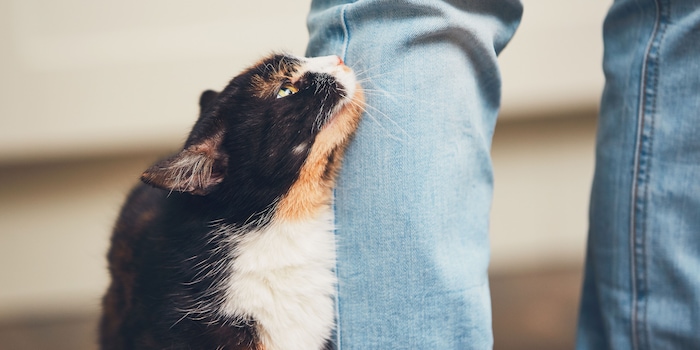
Robot cats also have a relaxing effect
Many people find it calming when cats snuggle up. But is this also true if the cat is a robot? Yes, say researchers, but it depends on the cat's neck.
Having contact with animals is good for healthy and sick people - even if the "animal" is actually a robot. The best-known representative of this type is the therapy seal Paro, which can calm people suffering from dementia and alleviate their symptoms. The therapeutic effect of cuddling and cuddling with robotic animals has been scientifically proven. But what about animals that actively cuddle up to humans - like cats do? Researchers from the Japanese University of Tsukuba wanted to find out, using a model of a cat whose neck vertebrae can be flexibly adjusted: Sometimes they are stiff, sometimes pliable.
Because as emotional as the cuddling of a cat is, it obeys a mechanism that can be described quite objectively. When a cat touches an object, it changes the stiffness of its neck depending on the situation. Depending on how the cat's head and the human leg are positioned in relation to each other, the cat transmits different amounts of force. Researchers have already transferred the principle of this variable joint stiffness to animal robots, but not much was known about the therapeutic effect until now.
For their investigations, the Japanese research team has now tested their cat robot on 22 test subjects. The researchers adjusted the stiffness of the cat's neck by adjusting how tightly the wires in the animal robot's neck were tightened. The participants recorded on a questionnaire how the cuddly robot cat affected them. The result was clear, write the experts in the journal "ACM Transactions on Human-Robot Interaction": After a 40-second cuddling session, the test subjects felt significantly more relaxed.
From the results, the researchers concluded that the robotic cat has the most calming effect when it presses more or less strongly against the human during contact, i.e. when the flexibility of its neck varies. Some test subjects reported that the varying force that the robotic animal transferred to them felt particularly real and natural. However, the researchers also admit that they were unable to draw any statistically significant conclusions from their study as to whether robotic cats with low, high or varying neck stiffness lifted the mood of the test subjects the most.
They attributed this primarily to the design of the test animal. Its compliance could not be adjusted precisely enough. The stiffness of the wires in the cat's neck was not sufficiently harmonised with the stiffness of the rest of the robot's body, the team writes. Further experiments are needed for clearer conclusions.
Spectrum of science
We are partners of Spektrum der Wissenschaft and would like to make well-founded information more accessible to you. Follow Spektrum der Wissenschaft if you like the articles.
Original article on Spektrum.de
Experts from science and research report on the latest findings in their fields – competent, authentic and comprehensible.
From the latest iPhone to the return of 80s fashion. The editorial team will help you make sense of it all.
Show all